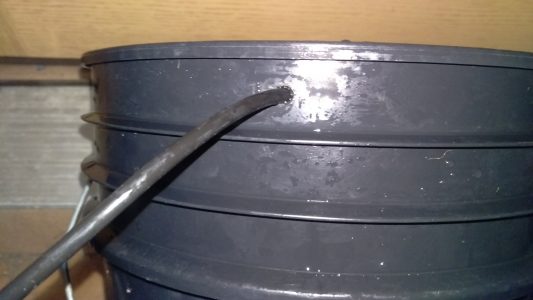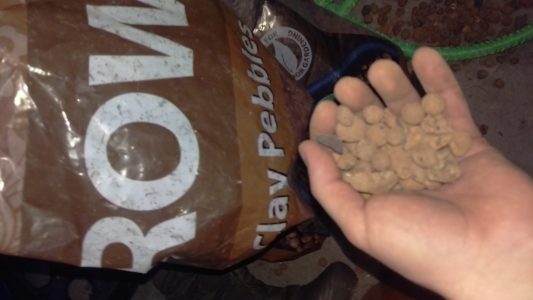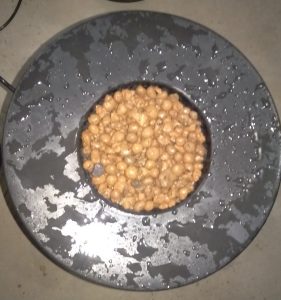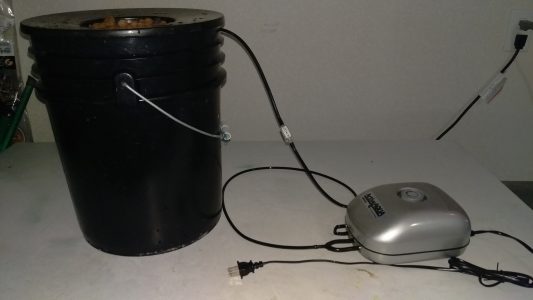Hydroponic gardening is what first interested me in gardening: the idea that one can take the essential ingredients for plant life, and apply them directly to that plant. A plant needs three basic things to survive: light, water, and nutrients. When using hydroponics you are feeding that plant directly through its roots without soil. There are many types of hydroponics such as Deep Water, Ebb and Flow, and Aeroponics — each one has advantages, and disadvantages of its own, but it comes down to personal preference when choosing a setup.
I have been practicing Deep Water Hydroponics for about two years and would recommend this as a way to keep a garden year round. Since you are supplying the plant with what it needs artificially, you are not hindered by time of year and the appearance of the sun. The setup is also quite simple, but does require regular maintenance.
The Setup
You will need a few supplies to get started — first a medium for your seeds, or clones. I recommend root plugs — seeds and clones can be directly placed inside of these. Plugs are excellent at retaining moisture, and promoting a healthy environment for your new plants. Once you have your plants placed into a plug you will need a clone dome, net cup, and form of medium placed inside the net cup. The net cup will act as a container to hold your medium and allow your plant roots to spread throughout. There are many containers that can be used in this process — I chose 5 gallon black food grade buckets. Smaller containers can be used depending on how large you want your plant to get. My go to medium is expanded clay pellets. These are also commonly referred to as Hydroton. The name Hydroton comes from a brand name rather than the actual product. The clay pellets are very porous and wick water tremendously well — this will keep your plant roots moist. An air pump, plastic hosing, and an air stone will also be needed to supply your plants with oxygen while they are submerged in the water contained within the 5 gallon bucket. If air is not introduced in this way, your plant will suffer from over watering and possibly root rot. The bucket will need nutrients for you plant — the nutrients selected will depend on what you are trying to grow. A device to measure your pH (Potential of Hydrogen) and PPM (Parts Per Million) is also recommended. Last but not least you will need a grow light and light timer.
The Process
I would recommend setting up your buckets, net cups, air stone etc. before cloning your plant, or starting your seeds. I will use my 5 gallon bucket as an example. I first start by drilling a hole towards the top of the bucket that is the size of the hosing to be used. Doing this allows you to run the hose directly into the bucket without allowing light in as it will damage the root system — I also recommend black tubing for this reason. Once the bucket is prepared, you will insert the hose line into this hole and connect it to an air stone inside of the bucket.


The next step is to prepare you medium — in my case this is expanded clay pellets. The pellets will need to be rinsed as they come absolutely covered with clay dust that you do not want in your reservoir. The medium can be placed in a metal colander, and rinsed until the runoff is clear from debris. Depending on the quality of your water, and its pH, it may be necessary to soak the pellets in a balanced water solution. What this means is to pH balance the water to the recommended pH value for the plant you’re attempting to grow, and soak the pellets in this for 24 hours. After the pellets are rinsed and prepared you may then place them inside of the net cup.


At this point you can connected the other end of your hose to the air pump while leaving the air pump unplugged, and then mount your light. I recommend installing your light with the ability to adjust the distance from your plants as needed.

Before you are ready to start you will need to start you seeds, or clones inside of the root plug. This is the step that requires a clone dome. When the plant roots begin to extend out of the bottom of the root plug they are ready to be introduced into the system.
Start It Up
Now you will have your bucket setup, connected to the air stone, and air pump with a light mounted above. At this point you may begin filling your bucket with water. The quality of your water will determine if preparation is necessary before use, but in my case I am able to use well water to fill these. Raise the water level of the bucket until it is just under the net cup to allow the busting of bubbles generated from the air stone to splash water onto the clay pellets. You may then add your desired nutrients to the water — this will depend on what kind of plant you are trying to grow. After your nutrients are added, you must then adjust the pH of your water to the desired level to allow the plant to absorb the required nutrient. At this point you may dig a hole into the clay pellets, place your root plug containing your started plant in this hole, and cover it with the pellet. The started plant should now be securely in your net cup. Plug your grow light into the light timer and program this to your desired setting. The air stone may then be plugged in, but be sure to keep the air pump either above the bucket water level, or use a one way air valve between your bucket and air pump. If water feeds back into your air pump this can potentially break it, or worse.
There you have it! You should now have a functioning Deep Water Culture hydroponic setup. I recommend balancing the pH of your setup every day until you get a feel for the variations during the plants’ grow cycle. I have had success checking these every other day. A PPM meter for checking nutrient concentration in your reservoir is also recommended to keep an eye on your salt levels. The buckets should be changed once a week to promote a healthy plant.
About Honeystick
Twitter •